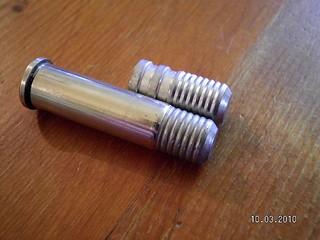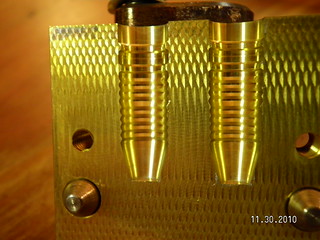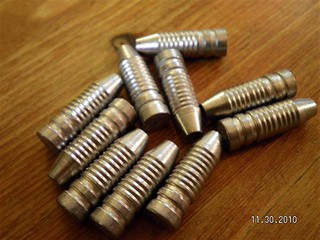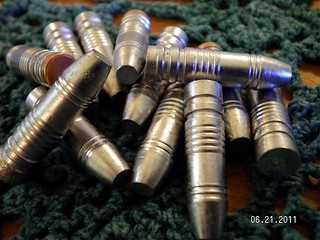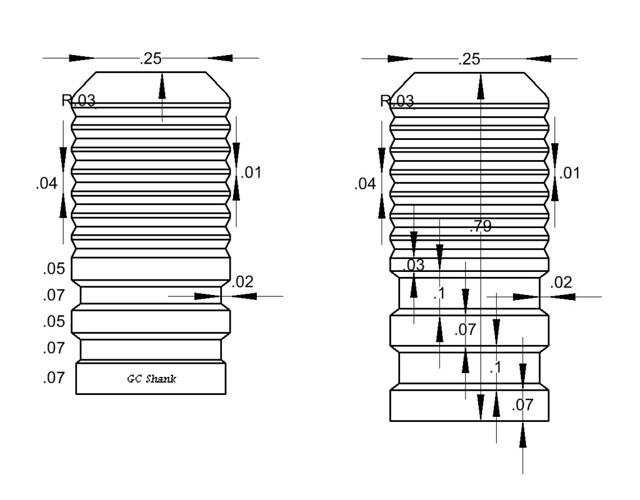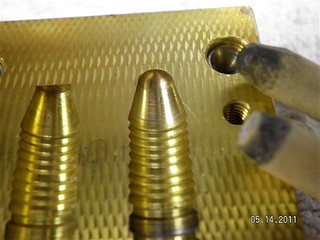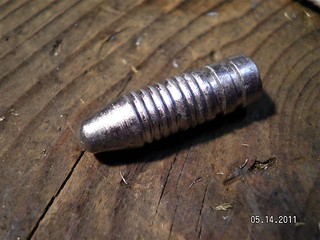I am probably in over my head, but I like CAD so I went ahead and came up with a few boolit designs for 38/357 guns. I would greatly appreciate any comments from people who have submitted their own drawings for custom molds, and who may have had to change certain aspects based on the reality of CNC capabilities/proper mold fill-out/boolit release from mold, etc.
I am pretty ignorant of proper lube groove depths or widths, but I think this is an area of significant flexibility... but any insight is very welcome.
Or, if you just think the design is a bad idea, for whatever reason, let me know!
This has a pretty standard SWC front, but I gave it some extra length to bump up the weight and increase the length of full-diameter driving bands. I am attempting to combine Tumble lube grooves with more standard lube grooves. My thinking is that low pressure loads just get tumbled, while magnum loads would get pan treatment in addition to being tumbled.
The odd shape of the two larger lube grooves was also intentional, my thinking that the liquifying of the lube would create small eddy's near the bottom of the groove, keeping the lube in the groove a little longer. Maybe pure hogwash, but it kinda makes sense.
This one is intended as a big-boy hunting/SD round, shot around 1000-1200 fps with pretty stout loads. I drew this one first, and I have a feeling that all the square corners may pose problems in fabrication as well as mold operation. All that can change easily, but for now I just wanted to see what everyone thought of the general shape and groove placement.
As with the previous design, I am attempting to combine large lube grooves with small ones, since I would like to find a boolit capable of shooting within a variety of temperatures at a variety of pressures. Again, I figure that the bottom groove will be filled with some heavy duty pan lube, while the top grooves will be more like Tumble lubed. This boolit has a full 50% of its length at full diameter.
Thoughts? Thanks in advance. I am still very new to all of this, and my skin is thick. Dont be afraid to beat me up, or knock some sense into me.

|
   
   
|


|






 Reply With Quote
Reply With Quote







